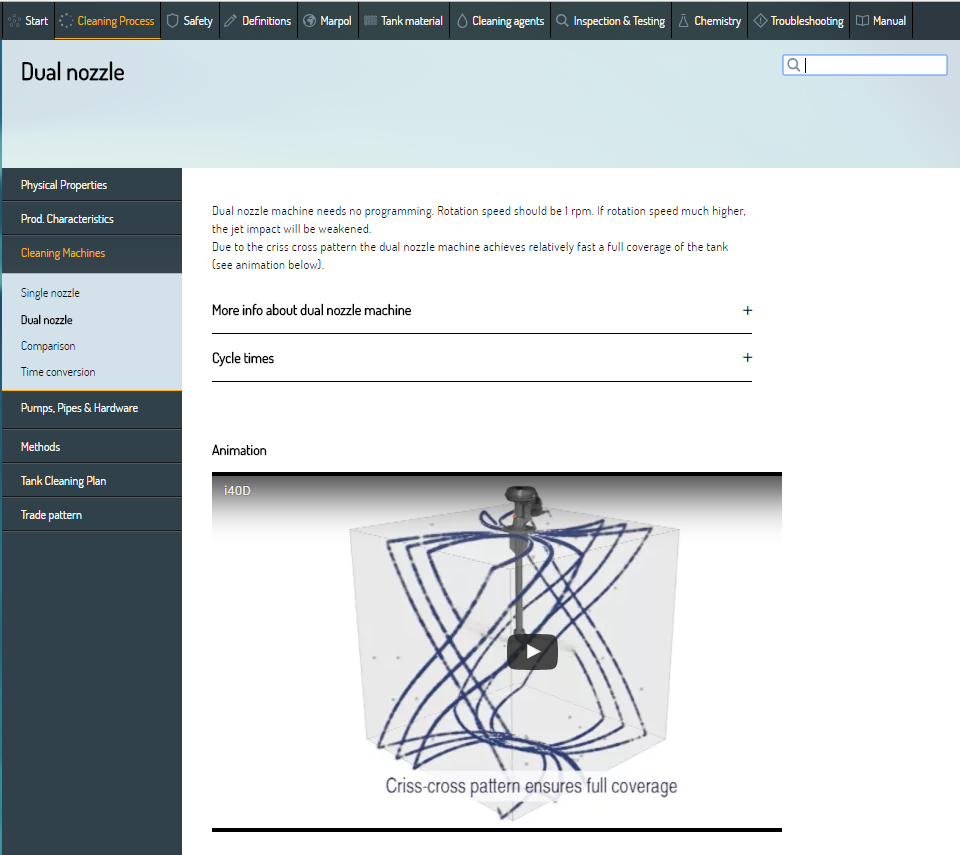Knowledge Base
This seminar is an integrated WIKI covering the theoretical knowledge that is required for cargo tank cleaning.
An example of our chapter cleaning process and cleaning planning explaining the dual nozzle tank cleaning machine is shown below:

Safety
Tank cleaning related safety hazards
Tank cleaning is essential on a chemical tanker, but it must be recognised as a potentially hazardous operation, which involves special hazards such as Fire, Explosion, Undesired Reactions, Exposure to hazardous substances and Emissions. It is therefore of utmost importance that the greatest possible care is exercised in connection with all tank cleaning operations to avoid accidents and incidents.
These hazards and methods to manage these hazards are descibed in MIRACLE information section.
Tank inspection
Cleaning results, testing methods and wall wash procedure
Methods how to inspect a tank after cleaning operations are described.
The most common testing methods such as PTT Test, Water Miscibility Test, Chloride Test, Colour Test, UV Test, Acid Wash Test and NVM test are described in detail.
Also the Wall Wash Procedure is described including the necessary precautions, the choice of test sites the sample collection procedure and the equipment and reagents.
MARPOL
Summary of ANNEX I and ANNEX II requirements
Short and comprehensive description of the ANNEX I and ANNEX II reqirements such as description of the pollution categories, stripping requirements, definition of Solidifying and High Viscosity Cargoes and the washing requirements for the different categories.
Cleaning agents
Major properties and list of MARPOL approved cleaning agents
Description of the selection of cleaning agents depending on the planned tank cleaning process. This includes explanation of saponification, emulsification and other important characteristics of cleaning chemicals.
A complete list of MARPOL approved cleaners according to Annex 10 is included in MIRACLE.
Definitions
Detailed description of terms and abbreviations used in MIRACLE
Terms like water miscibility, melting point, flash point, vapor pressure, boiling point, TLV, NVM etc are described, defined and if applicable measurement methods are listed.
Troubleshooting
Solutions for common tank cleaning problems
Typical problems described include
- White residues after cleaning of or with Caustic Soda Solution,
- White residues after cleaning of fatty acids or vegetable oils with a high free fatty acid content
- Inert gas residues
- Brownish residues after Crude Benzene
- Removal of Hydrocarbons
- Inhibitor residues TBC – Tertiary Butylcatechol in Styrene on stainless steel and coatings
- and many more….
